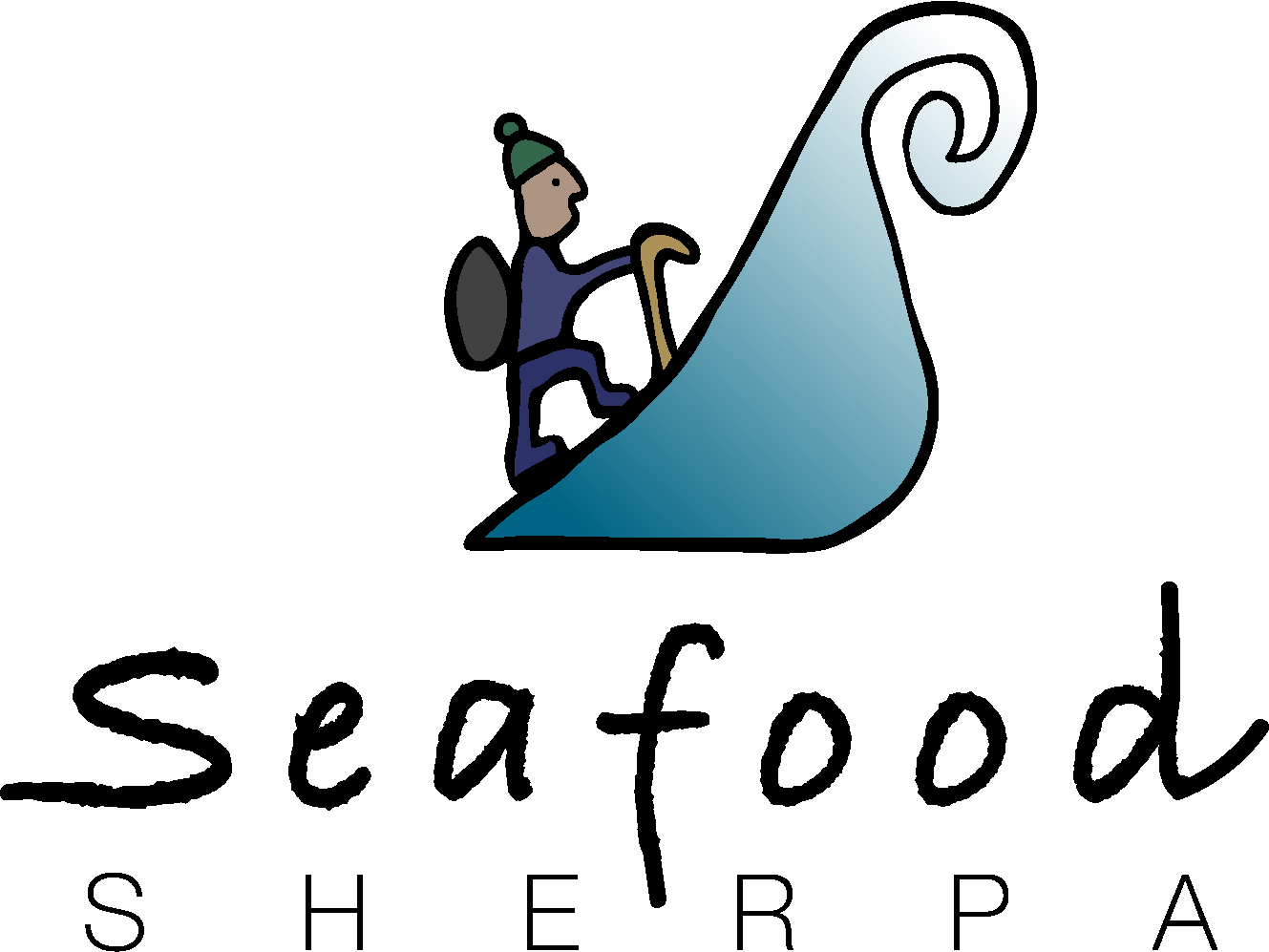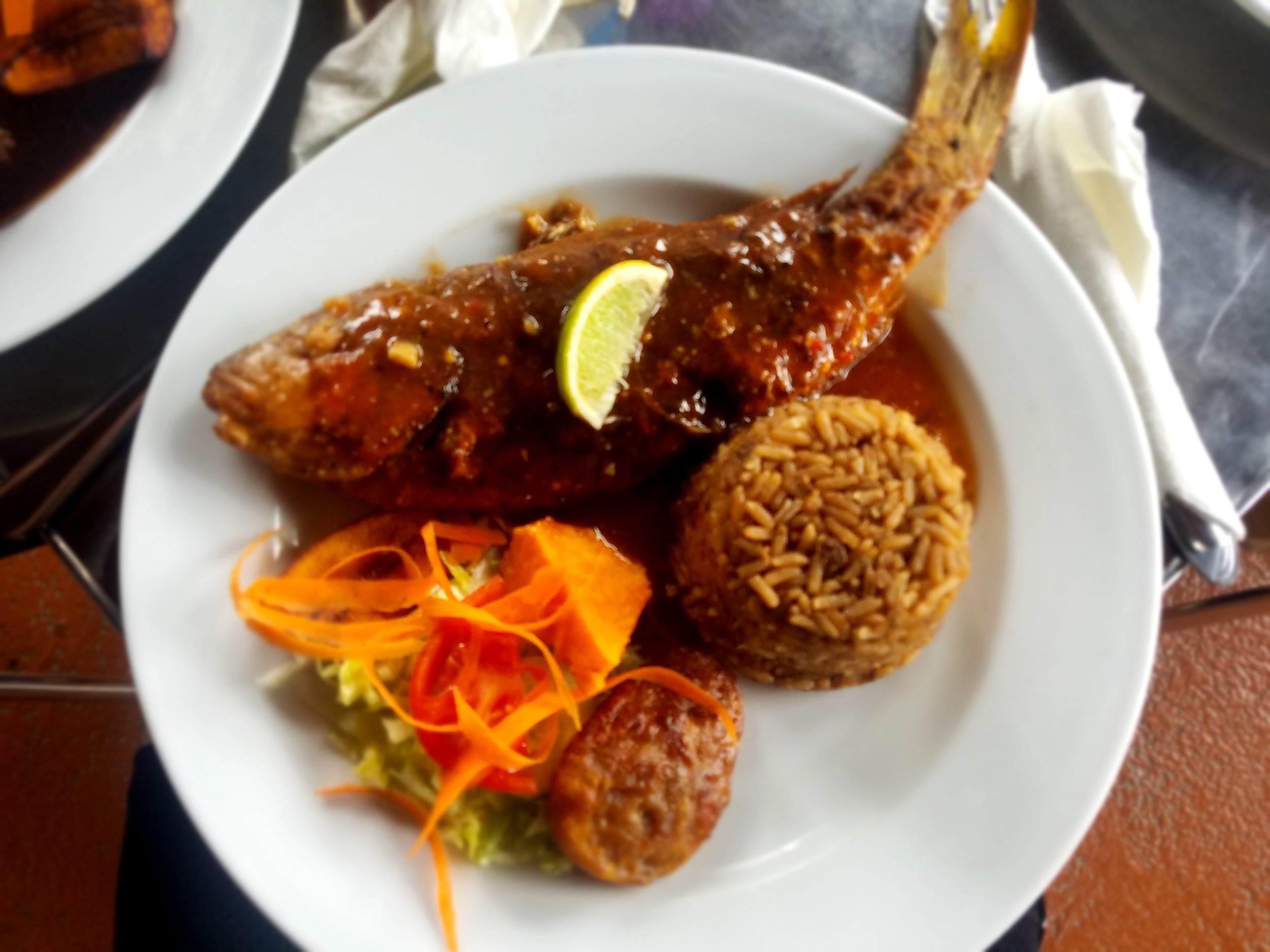A VACATION FOR YOUR TASTEBUDS
When traveling, one of the most natural ways to participate in the local culture is to sample authentic local cuisine. For me, it is one of life’s greatest pleasures. Every time I take a trip, I attempt to immerse myself in the lifestyle of the locals and become a temporary resident. When in Rome, am’I’right?
In order to be able to really go wild with this concept, you need to be a little bit adventurous and you need to have a pretty broad culinary comfort level. By expanding your seafood selection at home, you can open yourself up to a wider array of local delicacies. For example, it might be hard to go from fish sticks to a creole snapper, like this guy from El Fredo’s in St. Kitts:
This wonderful lunch came after a guided rainforest hike. At the end of the hike, our guide, who was also our driver, dropped off all the other passengers. We were the last in the car and it was close to lunch. He was such an interesting guy that we wanted to spend some more time with him, so we asked him to take us to his favorite lunch spot. For the price of a lunch, we learned more about the island here than on all the tours that we took on the rest of the trip. Ten years ago, before I had developed my love and understanding of seafood, I would not have had the confidence to let a stranger on a small tropical island make my lunch decisions for me. I would have been afraid to walk into this little screened porch restaurant on the side of a narrow two-lane road, with only about a dozen items on a chalkboard outside. Ten years ago, I would have missed out on a huge part of the culture. At about 65 square miles in size, St. Kitts is a small island where almost everyone lives within walking distance of the shore. Locals eat primarily fish, lobster, and mutton. There are some chicken wings and pork ribs available, but otherwise, visitors that don’t eat seafood are relegated to mediocre pizza joints and a KFC downtown, jokingly dubbed the U.S Embassy by our taxi driver. Why would you want a boring pizza, when you could have a giant Caribbean lobster or a conch fritter, or any of the dozens of local fish options?
Having had such a successful lunch adventure, we were inspired to try our hand at cooking some local fish on our own. I bought a selection of local fish from a diver near the ferry terminal and a couple of types of squash and jerk seasoning. With most dinners on the island costing upwards of US$100, it was a pleasant surprise to get a feast of whole fish for only $10.
We tried a honeycomb cowfish, a princess parrotfish, a doctorfish, and a grunt. A grunt tastes a bit like a snapper, but with a bright red mouth that opens when you grill it, they are certainly interesting for the kids. Doctorfish are a species of surgeonfish that have a tough leathery skin, but whose meat has a nice silky texture and a nutty, almost smoky flavor. The parrotfish has a much softer meat with big flakes, similar to a pink grouper, but naturally saltier. The boxfish was by far the most interesting of the bunch. Its exterior is a bony shell, which gives them the local name shell fish. Locals split these along the spine and then stuff them with asparagus or squash like the one in the top left. You can also cook them on the half shell like I did with the two on the bottom left. The meat of this fish is the exact texture of chicken, but the flavor is something that I’ve never found anywhere else. It is hard to describe, but is absolutely wonderful. We found that there is something in this fish that can coat some of the meat and create a bitter aftertaste, but we couldn’t identify the source. I’ll have to give it another try. I saw an interesting technique for fileting these, so I think I’ll try that and see how it works. Regardless, of that minor setback, dinner was a huge success and a bit of an adventure and we were all glad we did it.
Note the boxfish in the upper left. Crazy, right?
A note on food adventuring:
Some food choices carry an inherent health risk and each person must arrive at a personal decision regarding how much risk to take. While small, there is a risk of a foodborne bacterial illnesses every time you go out for sushi. Knowing these risks, and visiting trusted establishments is a good but not foolproof way to protect yourself. Most people accept this minor risk. Standard food safety precautions may not always be an option outside of the US. In general, I avoid raw seafood when I travel, but sometimes I break that rule knowing that I could become sick and knowing that when I am well again, I’ll say it was worth it. There is another type of illness possible with seafood, that most travelers are not aware of and that most would agree is not worth it. It is a non-bacterial disease that is not removed by freezing, cooking or any other technique. It is called ciguatera and it is undetectable. Read about it here: https://www.ncbi.nlm.nih.gov/pmc/articles/PMC2579736/
To avoid ciguatera, read up on your destination and understand what fish are safe and not safe before you go. Listen to locals. The same diver selling the small fish that we purchased, also had barracuda for sale. Every person on the island mentioned that barracuda is also called poison fish because many people become sick after eating it. A little online research shows the culprit to be ciguatera and it is common enough and the disease terrible enough that it exceeds my personal tolerance for risk. So, we passed on the barracuda, despite the other common bit of local knowledge that it is the sweetest fish meat that money can buy. I encourage you to make your own decision and to take a cautious but not fearful approach to food adventure. Don’t rule out everything, but don’t be dumb.



